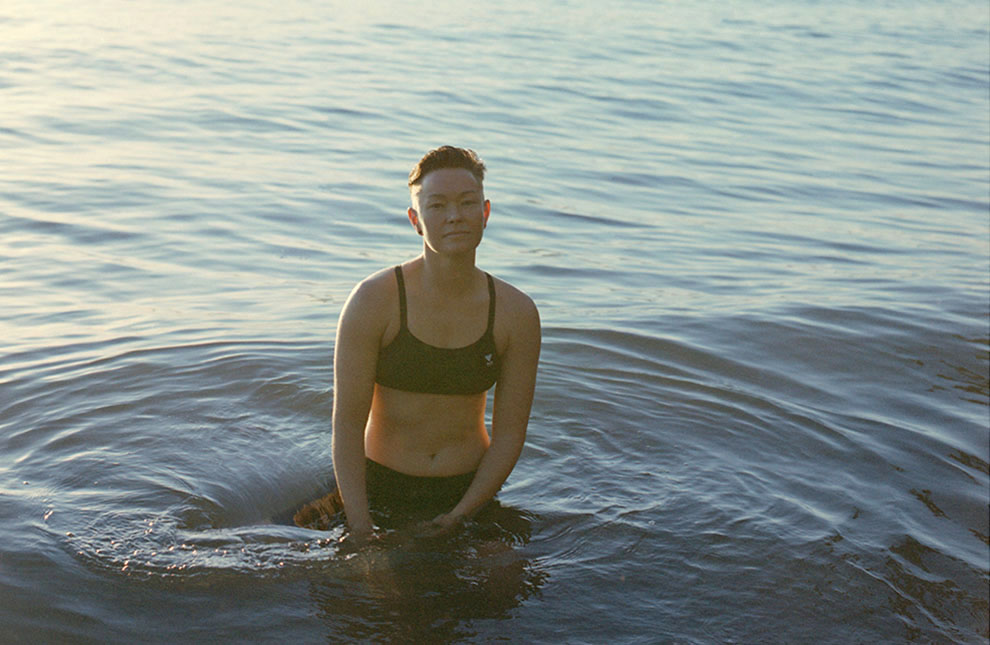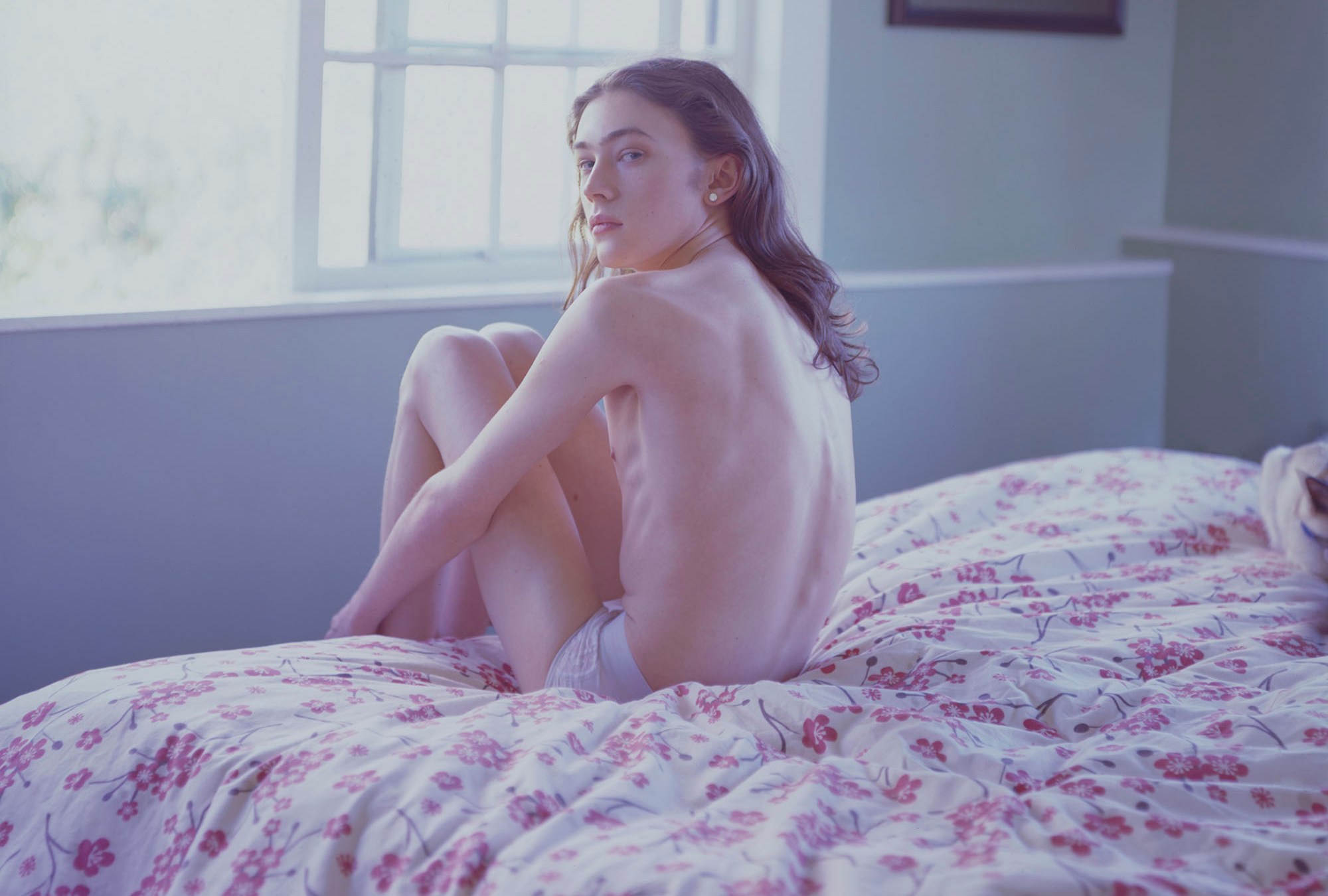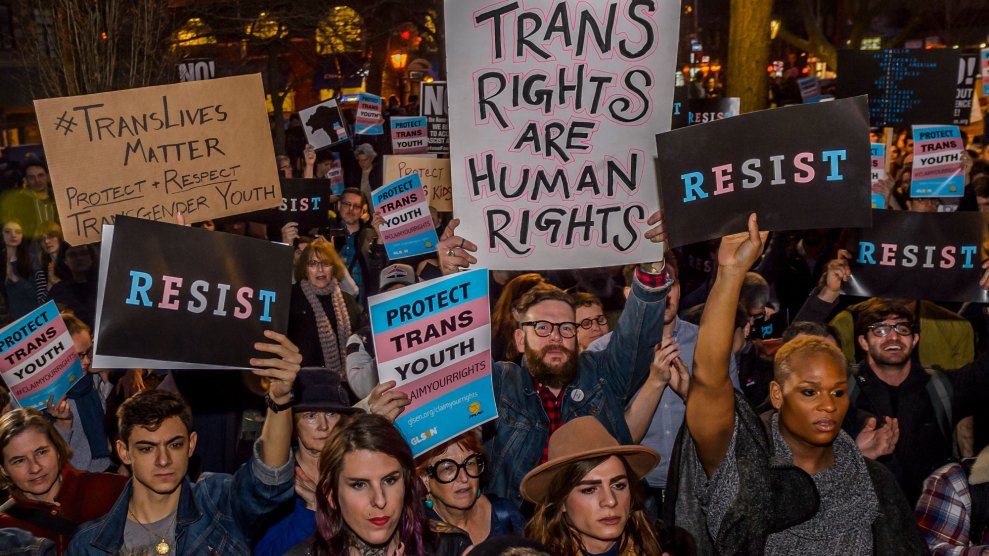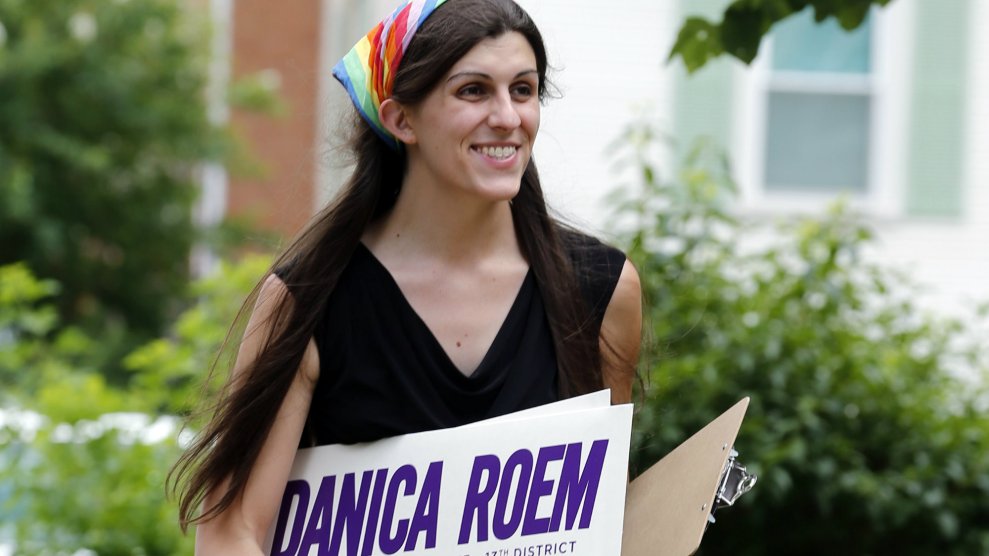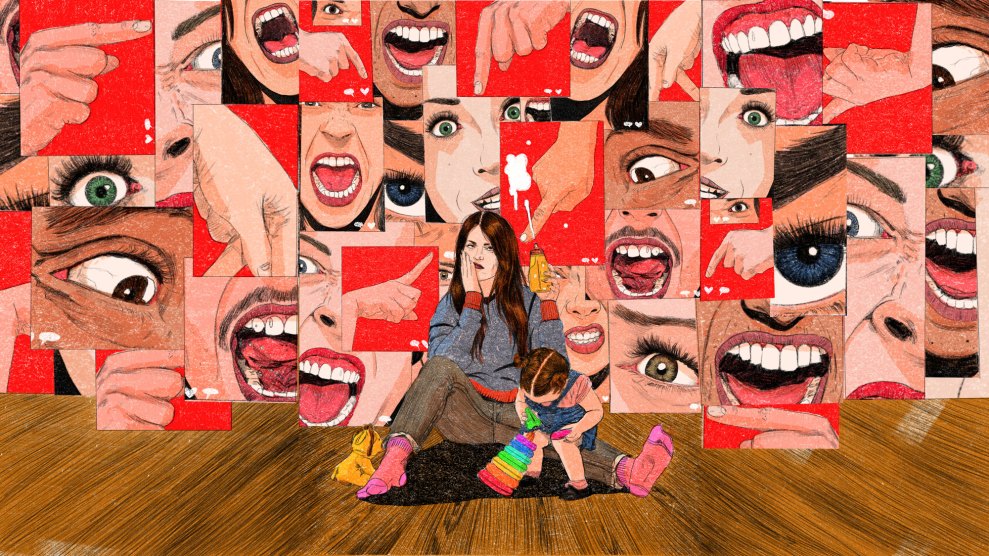Her whole life, Chloe Aftel has been told she doesn’t behave like a lady. Plainspoken and assertive, she realized in adolescence that adults expected her to be demure. As Aftel grew into herself in a binary-focused, heteronormative world, she found herself asking: “Who made up these fucking guidelines and why on Earth do I have to follow them?”
So when Aftel met Edie, the partner of a friend’s son, in 2012, she was struck by how at ease Edie seemed to feel in their body. Edie, a transgender woman, identified as gender-fluid at the time, and like many in the gender nonconforming community, used they/their pronouns. “I just thought it was so beautiful and liberating to see someone being themselves,” Aftel says. To her, Edie seemed free. The notion of genderqueer identity was new to Aftel, a photographer, but as she and Edie hung out, Aftel learned about the flexible space between the male-female binary.
Aftel, who has photographed assignments for publications including Mother Jones, asked if Edie would agree to sit for a portrait. The image (above) became the first in a series that spanned six years and countless states across the country. In January, the result of the project, Outside & In Between, was published.
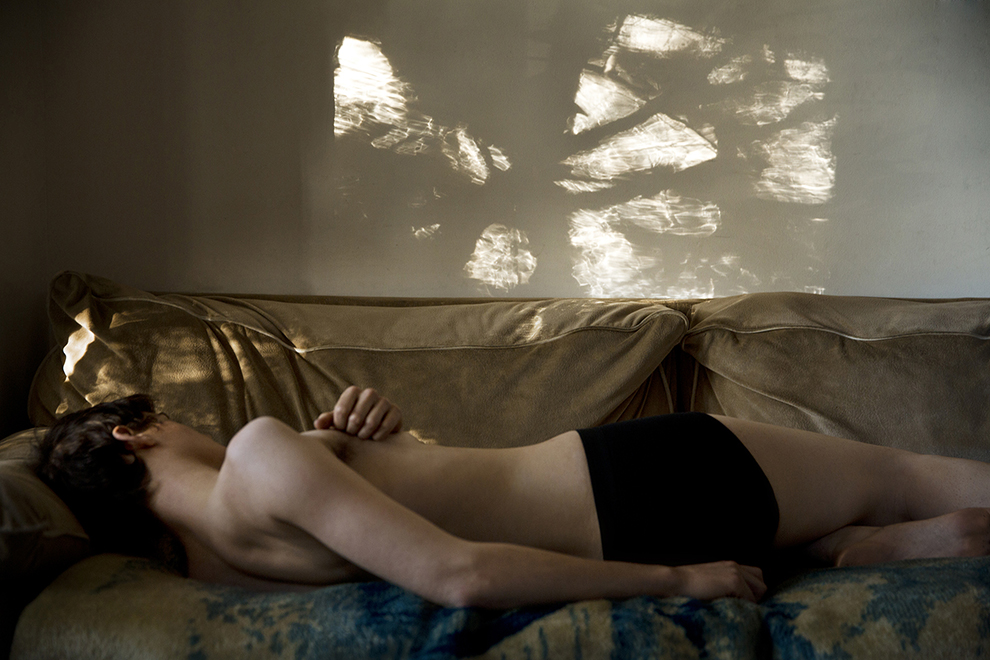
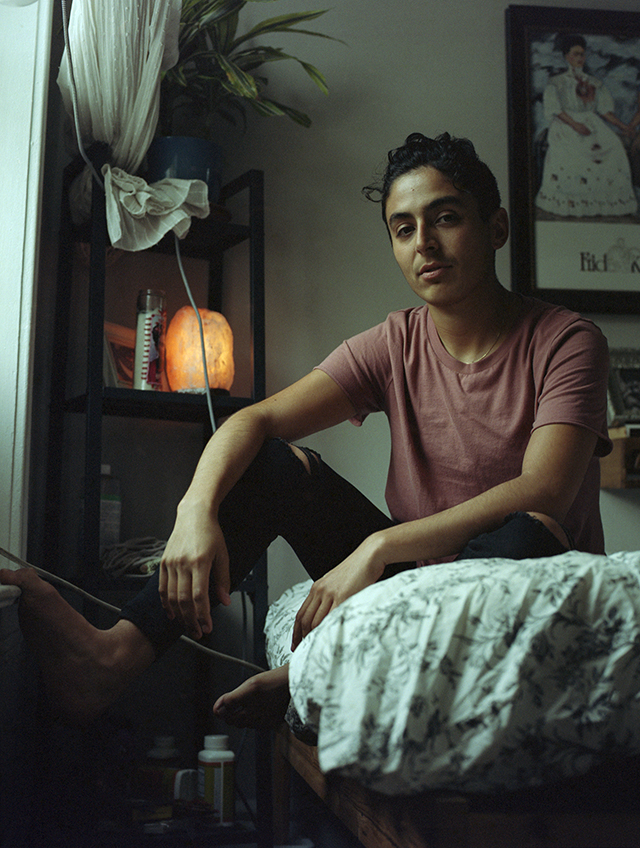
“I want people who would not normally think about these things to feel invited in,” Aftel says. When her heterosexual audience find her subjects attractive, she invites them to question their discomfort. “People are turned on by many different things,” she says. “They’re just afraid to admit it.” The book has been a catalyst for conversations in her own life, as older family members have confided feelings of same-sex attraction after seeing her photographs. “I was like, yeah, of course,” Aftel says. “I believe very strongly that most people don’t exist in a wholly heteronormative space.”
Aftel wanted her series to encompass a full spectrum of America’s genderqueer community. But gaining trust, and finding older individuals and those from minority backgrounds, was tough. “I had to really earn the right to shoot them,” she says.
While many of her subjects were photographed in California’s liberal Bay Area, Aftel also traveled to more conservative parts of the country to meet people living in secret. Willow lives somewhere in the Midwest and reached out to Aftel when they learned about her project. Aftel drove to their trailer park and was moved by what she saw. “When you go into their house, it’s filled with all these slips and silks and heels. And that’s them. Their whole, real self is only expressed in this tiny room,” she says. “There was something very beautiful about getting to have that intimacy with them, but there’s also something so fucking heartbreaking—that their entire life, they’ve lived as someone else.”
And then there was Ray, whom Aftel photographed on the porch of their home. In the image, a large Old Glory hangs nearby while Ray, dressed in a soft yellow cardigan and black skirt, perches on the fence with a gaze that looks directly into the camera.
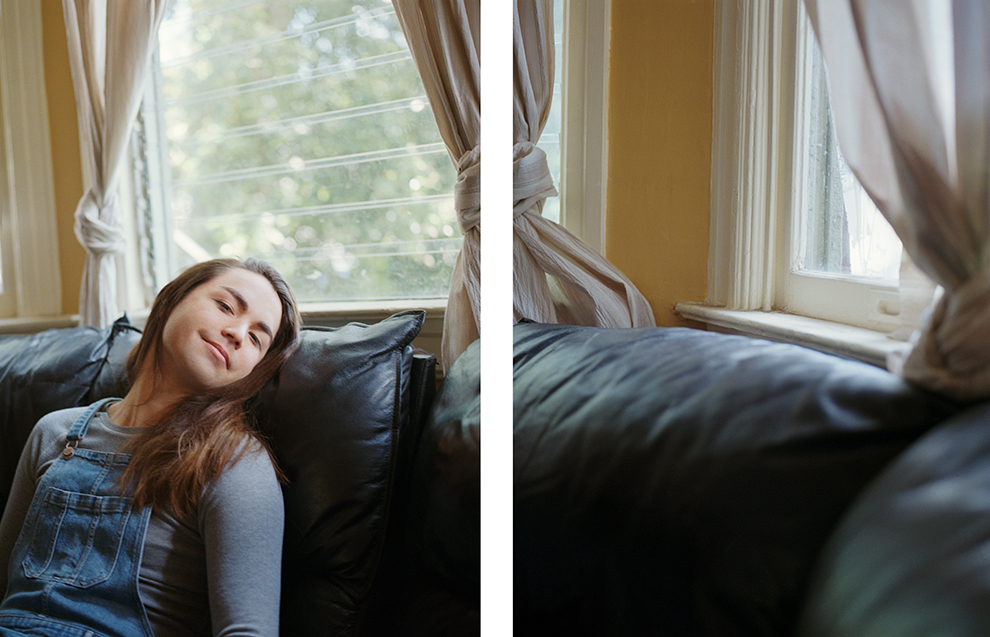
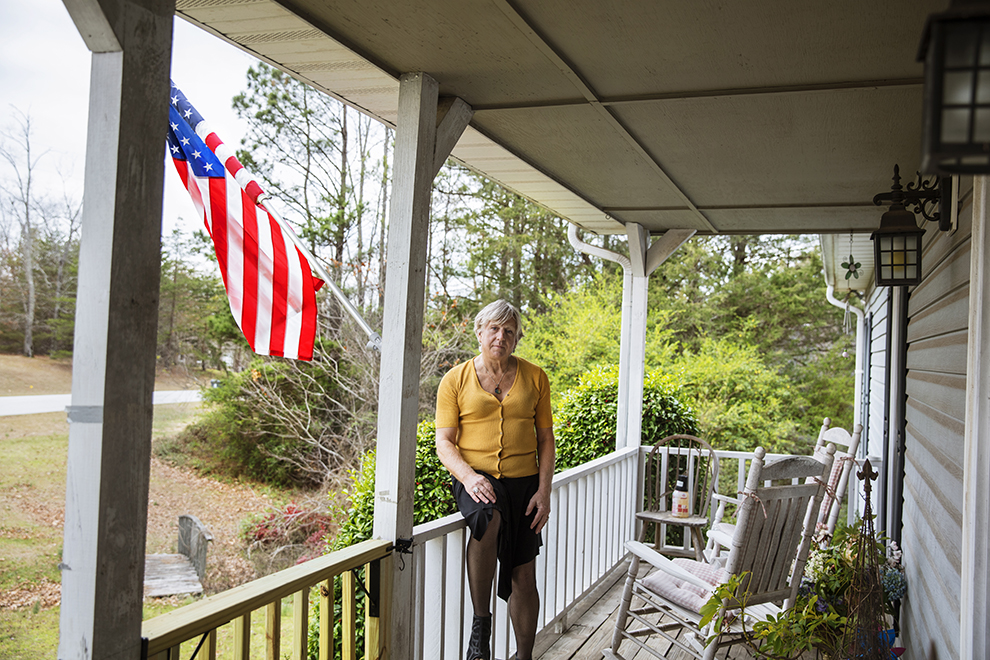
The LGBTQ rights movement saw success under the Obama administration. Same-sex marriage became legal and “Don’t Ask, Don’t Tell” was repealed. But over the course of her project, Aftel noted a considerable generational divide between her subjects’ experiences. Unlike many of the younger people she photographed, Ray still doesn’t feel comfortable expressing their nonbinary identity in public.
“[Ray has] lived their whole life trying to fit in,” Aftel says. “I’m not sure that younger people really know what it means to have lived an entire life in a different way for fear of physical violence. For fear of not being able to get a job. For fear of survival.”
Aftel wanted to ensure the photographs were a collaboration between herself and her subjects. Each person was photographed in a place they said felt like home: their bedroom, a park, the ocean. In Outside & In Between, Aftel has included personal essays by six of her subjects that recount, in their own words, their experience of being genderqueer. The portraits were shot on both film and digital, and Aftel avoided prescriptive direction and lighting setups in favor of photographing her subjects as she found them. “The most important thing to me was that it reflected back the feeling of the subject,” she says.
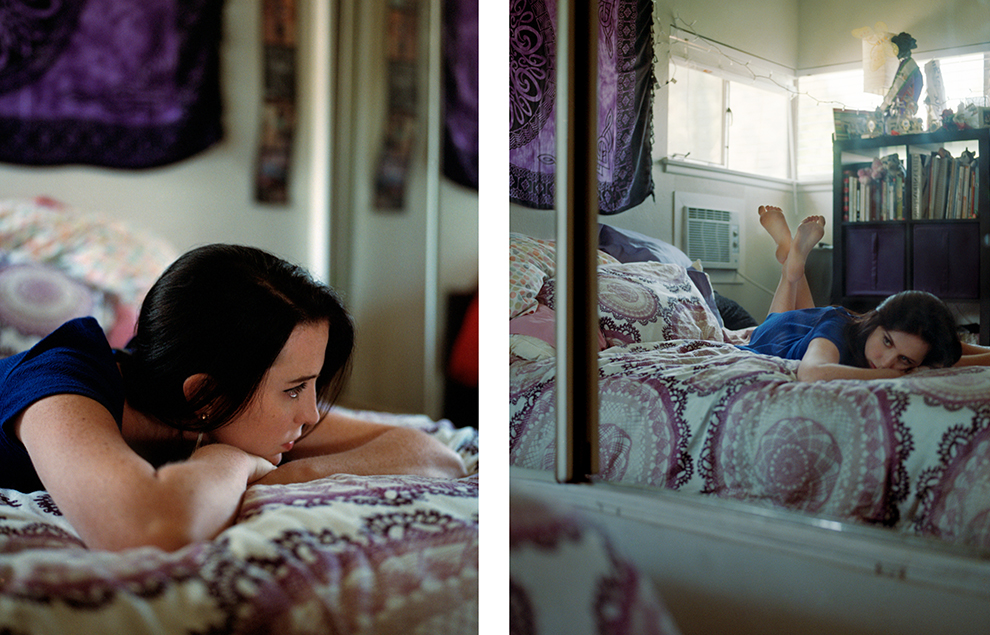
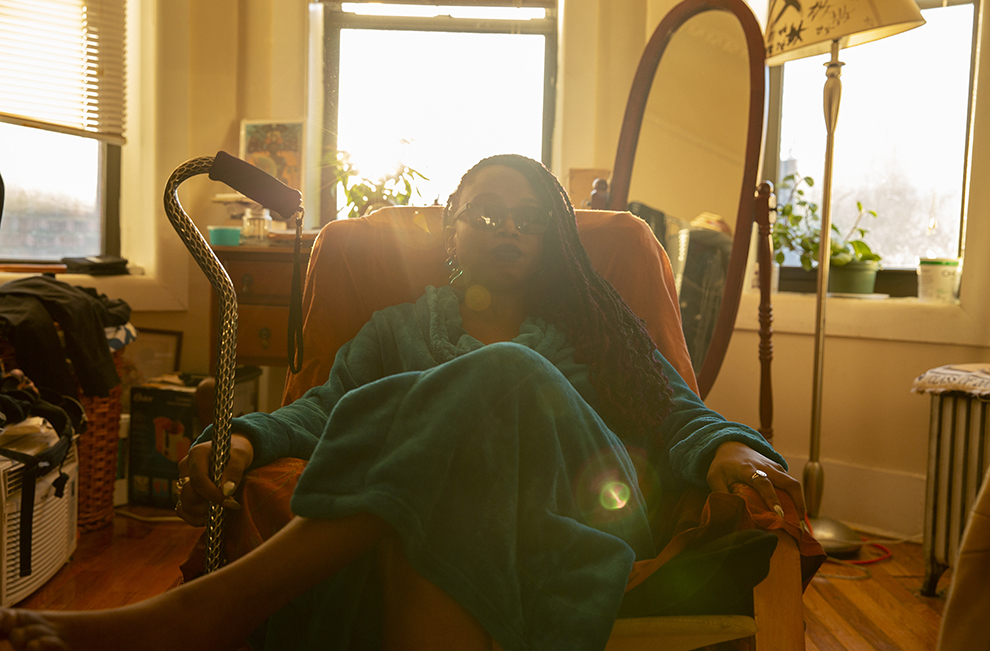
Since taking office, President Donald Trump has consistently attacked the rights of LGBTQ people. The administration has attempted to ban transgender people from the military, rescinded guidance that stated transgender students and workers are protected under civil rights law, and backed anti-LGBTQ legislation in the courts at every opportunity. Meanwhile, the number of transgender people murdered continues to rise.
Given the discrimination they face, Aftel says she is inspired by her subjects’ strength and unwillingness to compromise on living as who they are. “People really paid a price for this and continue to pay a price,” she says. “My hope is, for people who are struggling to understand this, that the human connection will have more meaning.”

